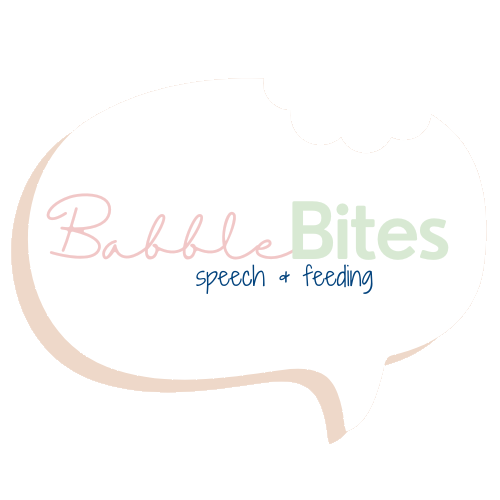The Power of Parentese: How It Helps Babies Say Their First Words
What is Parentese?
Parentese, also known as infant-directed speech, involves using a higher pitched voice, exaggerated intonation, and slower, more melodic speech patterns. This can be done by slightly stretching out the vowel sounds, and using a “sing-songy” rhythm to your speech. This differs from “baby-talk,” as with parentese you are not saying sounds and words incorrectly (e.g. “wittle” instead of “little,” “bwuduh” instead of “brother”). As a speech-language pathologist, I often use parentese in my early language therapy sessions, and frequently recommend parents utilize it at home, as well. Research has shown that using parentese can help children say their first words for several reasons:
You can use infant directed speech to enhance language development starting with newborns, up through children learning first words and phrases.
Attention:
Parentese can capture a baby’s attention better than regular “adult-type” speech. By using an exaggerated pitch and intonation, parents can create a more engaging and interesting way of speaking that captures their child's attention and keeps their baby focused on them. This means it makes it easier for your child to learn new words, because they are paying closer attention to the words, which is necessary in order to start using words. By increasing their attention to the words you are saying, it also means they may be more likely to imitate it because it sounds interesting to them! Imitating words is one of the first step towards using their first words independently.
Repetition:
Parentese, or infant-directed speech, often involves repeating words and phrases, which helps children learn new words and reinforce their understanding of language. While you do not want to use incorrect grammar, it is helpful to use simplified grammar. I typically recommend parents provide a simplified phrase or repetitive word, followed by the full grammatically-correct sentence. For example: “Car go! You made the car go!” “Put on, we are putting on your jacket.” “Wash wash wash, wash your hands” (all while using an exaggerated pitch and intonation).
Clarity:
Infant-directed speech often involves speaking more slowly and pronouncing words more clearly, which can help children hear and distinguish individual sounds and words more easily. Imagine hearing someone speak a language you know a little bit, but are not proficient in (high school Spanish or French anyone?). Now picture someone speaking it in a slow and pronounced way. It becomes much easier to pick out keywords that are important for you to not only understand what is being said, but to figure out how to pronounce the words in order to repeat them.
Emotional connection:
Parentese is often accompanied by facial expressions and gestures, which help to convey meaning and emotion. This emotional connection can help children associate words with specific feelings and experiences, which can encourage them to use language to communicate their own thoughts and feelings. By making the words fun and engaging by adding in facial expressions and an emotional connection to what we’re saying, babies become more motivated to imitate and use these words.
Using parentese is typically accompanied by increased emotional connection within the speaker’s speech, which increased child engagement.
The Takeaway
In summary, using parentese, or infant-directed speeech, can help children work towards saying their first words by capturing their attention, providing repetition and clarity, and creating an emotional connection that encourages language use. Often misunderstood as “baby-talk,” parentese is a research-proven strategy to enhance language development.
Follow us on Instagram for “bite-sized” information on language strategies:
This website and information on this blog post is provided for educational purposes only. It is not meant as medical advice, intended to replace a speech-language assessment, therapy from a speech-language pathologist, or serve as medical care for a child. It is recommended that you discuss any concerns or questions you might have with your speech-language pathologist, pediatrician, and medical team, and develop an individualized team plan specifically for your child.
Click below to pin this post to Pinterest to save for later and share!



